HAL OPAMP Use Cases ¶
User Application Initialization of the OPAMP Driver ¶
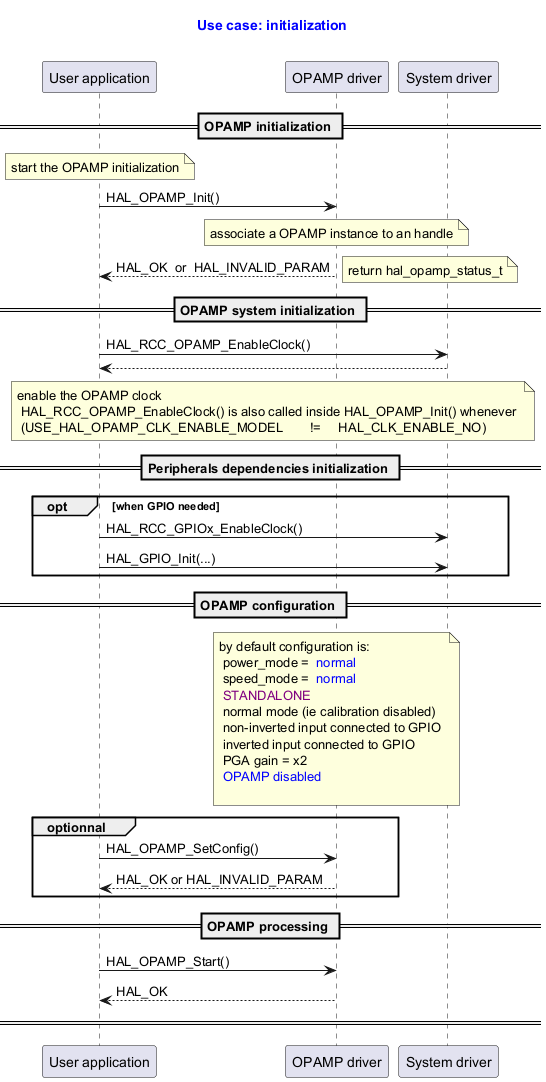
Functions called:
OPAMP Deinitialization by User Application, Minimal Sequence ¶
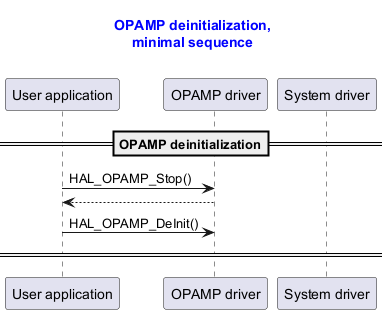
Functions called:
OPAMP Deinitialization by User Application, Full Sequence ¶
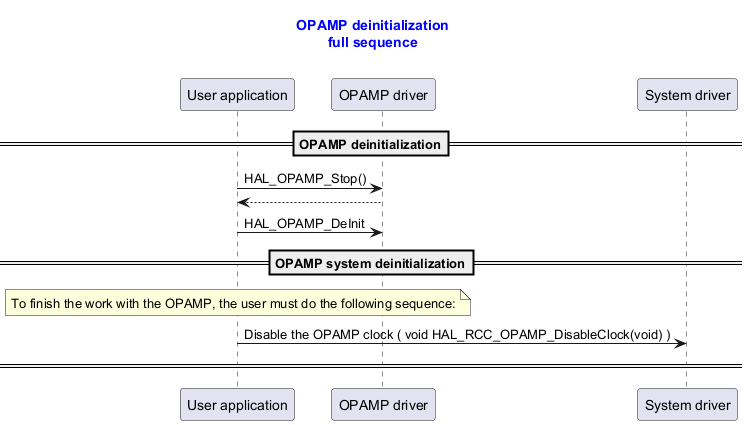
Functions called:
Use Case: OPAMP Reset Configuration ¶
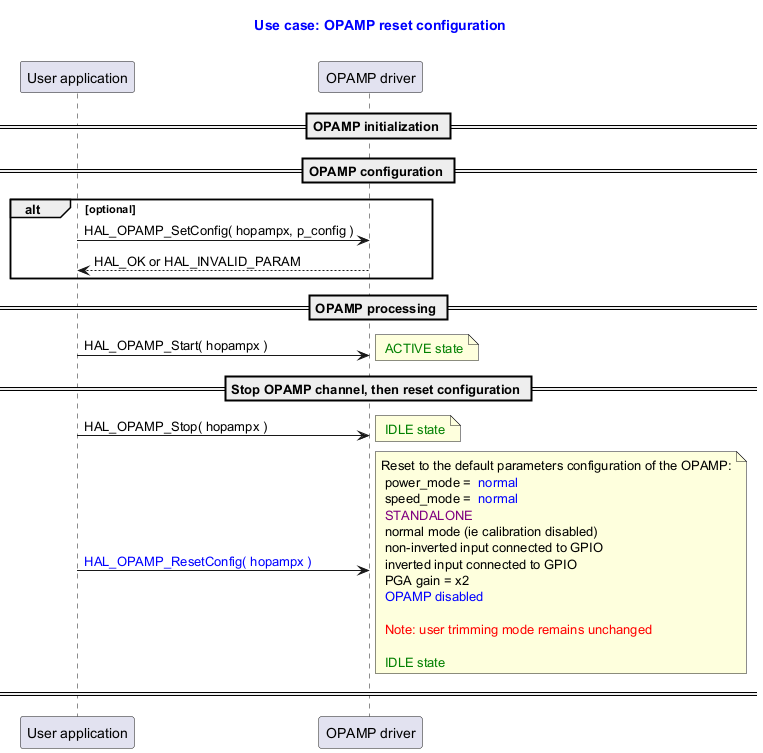
Functions called:
Use Case: OPAMP Set Configuration in Standalone Mode, Detailed Sequence ¶
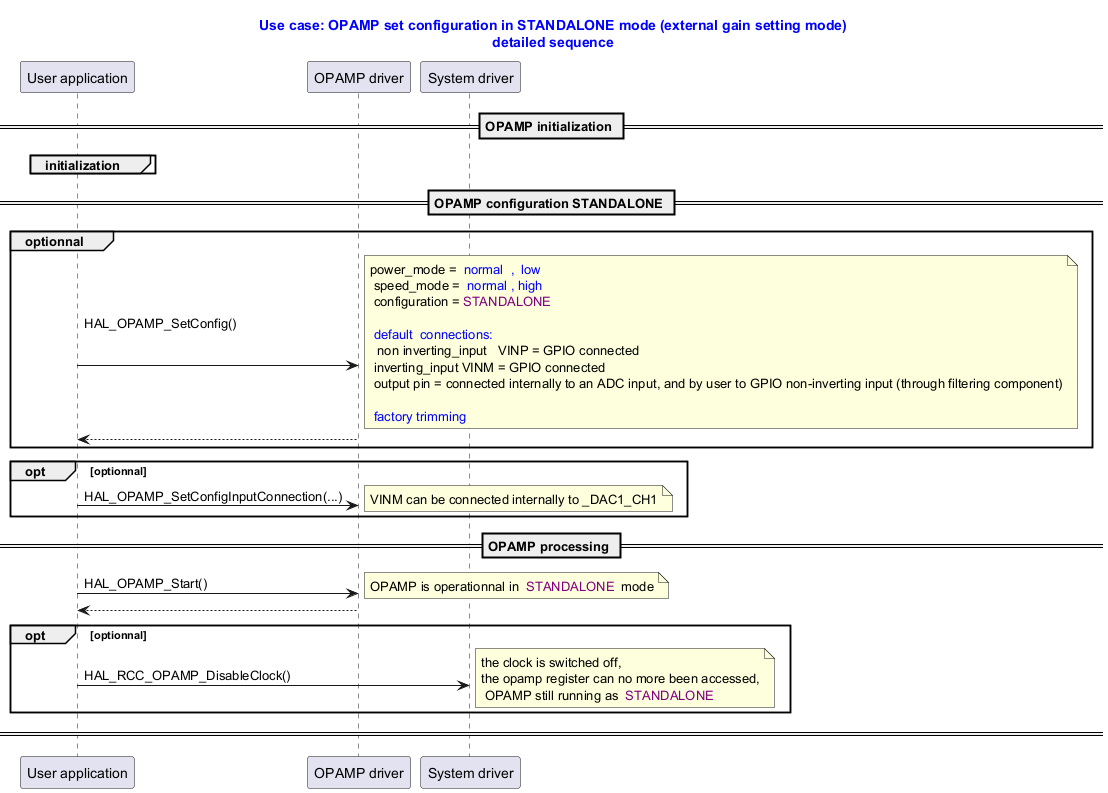
Functions called:
Use Case: OPAMP Set Configuration in Follower Mode, Detailed Sequence ¶
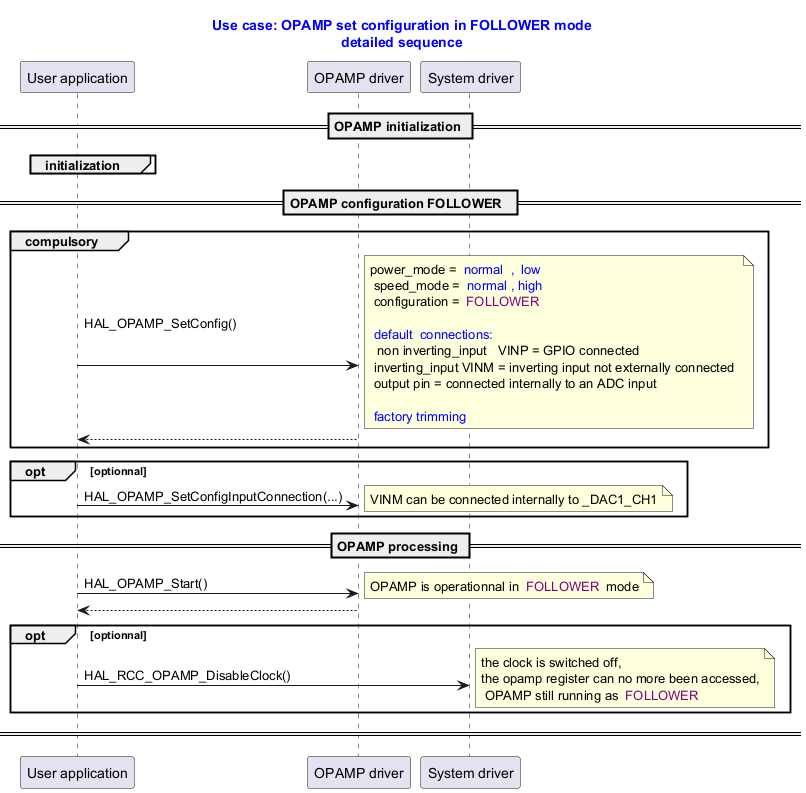
Functions called:
Use Case: OPAMP Set Configuration in Programmable Gain Amplifier Mode, Detailed Sequence ¶
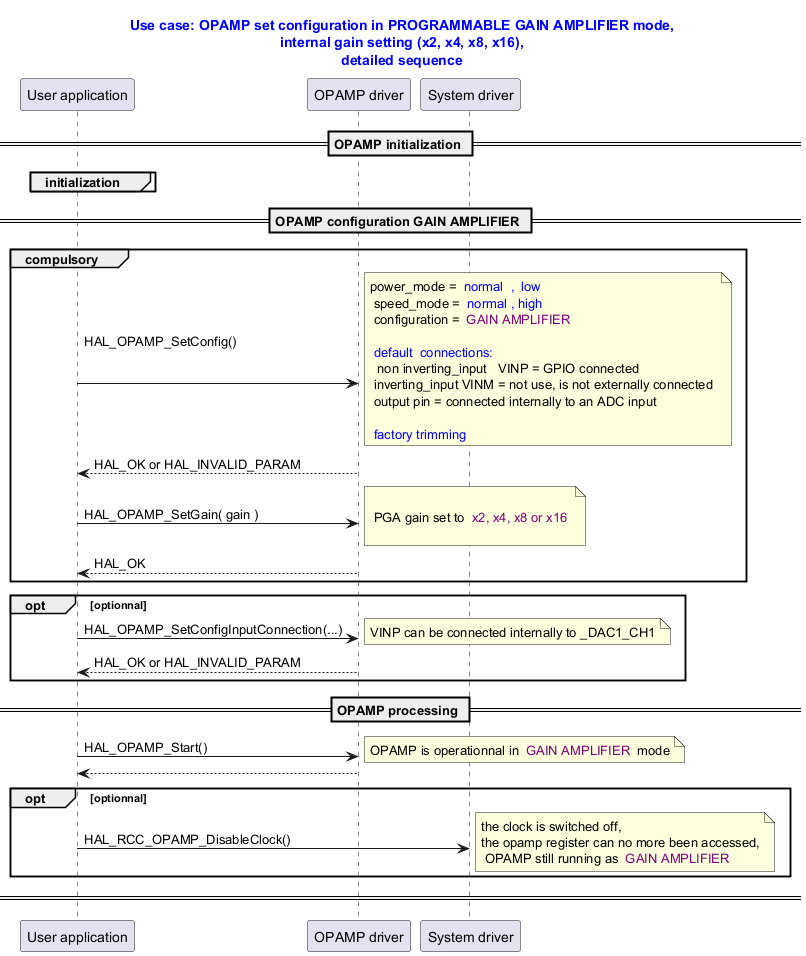
Functions called:
Use Case: OPAMP Set Configuration in Programmable Gain Amplifier with External Filtering Mode, Detailed Sequence ¶
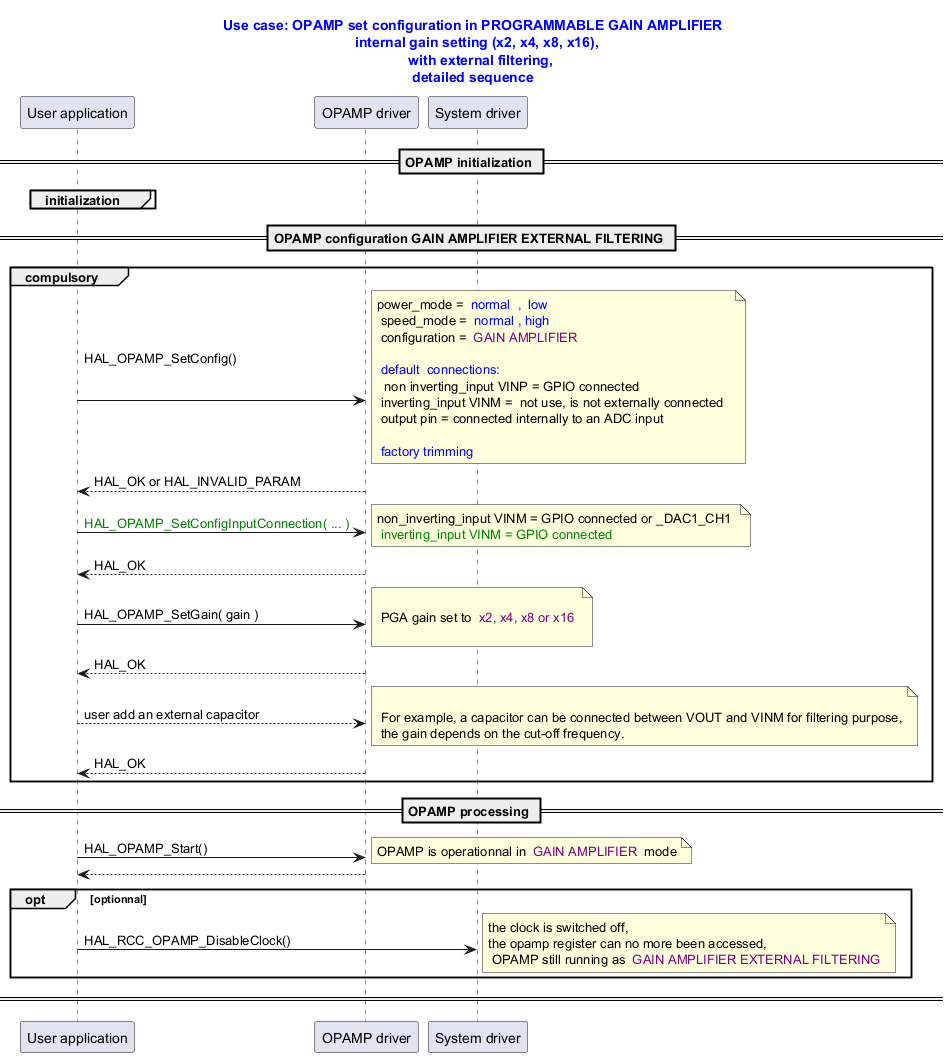
Functions called:
User Application Calibration in Parallel for Multi OPAMP in Normal-Power Mode ¶
![@startuml
title
<font color=blue> Use case: calibration in parallel for multi opamp in normal-power mode
end title
' Fix order of each column
participant "User application" as user
participant "OPAMP driver" as opamp
participant "System driver" as system
== OPAMP initialization ==
group initialization
opamp -> opamp:
note right: <font color=green> IDLE state
end
== OPAMP calibration ==
user -> opamp : <font color=blue>HAL_OPAMP_SetLinkNextHandle(<font color=purple> hopampX, hopampY )\n \n
note right: circular chained list = [ <font color=purple>hopampX</font>, <font color=purple>hopampY</font> ]
user -> opamp : <font color=blue>HAL_OPAMP_SetLinkNextHandle(<font color=purple> hopampY, hopampZ )\n \n
note right: circular chained list = [ <font color=purple>hopampX</font>, <font color=purple>hopampY</font>, <font color=purple>hopampZ</font> ]
user -> opamp : <font color=blue>HAL_OPAMP_CalibrateParallel( <font color=purple><font color=purple>hopampX , normal-power</font>)
note right: <font color=green> CALIB state
opamp --> user : HAL_OK or HAL_INVALID_PARAM
note right: <font color=blue> when HAL_OK is returned, those parameters are set for <font color=purple>each opamp of list_of_hopamp </font> : \n . normal-power trimming for PMOS (high voltage) differential pairs , \n . normal-power trimming for NMOS (low voltage) differential pairs.
== OPAMP configuration set in normal-power mode ==
user -> opamp : HAL_OPAMP_SetConfig() \n \n
note right: power_mode = <font color=blue> normal \nspeed_mode = <font color=blue> normal , high \nconfiguration = <font color=blue> FOLLOWER, STANDALONE, GAIN AMPLIFIER \n \n<font color=blue> default connections\n<font color=blue> user trimming
opamp --> user : HAL_OK or HAL_INVALID_PARAM
note right: <font color=green> IDLE state
== OPAMP processing with user trimming in normal-power mode ==
user -> opamp : HAL_OPAMP_Start()
note right: <font color=green> ACTIVE state
== ==
@enduml](../../../../_images/plantuml-254ab08e99031e6717e33c6925af04ce357173c4.png)
Functions called:
User Application Calibration in Parallel for Multi OPAMP in Low-Power Mode ¶
![@startuml
title
<font color=blue> Use case: calibration in parallel for multi opamp in low-power mode
end title
' Fix order of each column
participant "User application" as user
participant "OPAMP driver" as opamp
participant "System driver" as system
== OPAMP initialization ==
group initialization
opamp -> opamp:
note right: initialization for hopamp1 \ninitialization for hopamp2 \n<font color=green> IDLE state
end
== OPAMP calibration processing ==
user -> opamp : <font color=blue>HAL_OPAMP_SetLinkNextHandle(<font color=purple> hopampX, hopampY )\n \n
note right: circular chained list = [ <font color=purple>hopampX</font>, <font color=purple>hopampY</font> ]
user -> opamp : <font color=blue>HAL_OPAMP_SetLinkNextHandle(<font color=purple> hopampY, hopampZ )\n \n
note right: circular chained list = [ <font color=purple>hopampX</font> , <font color=purple>hopampY</font> , <font color=purple>hopampZ</font> ]
user -> opamp : <font color=blue>HAL_OPAMP_CalibrateParallel(<font color=purple> hopampX, low-power </font>)
note right: <font color=green> CALIB state
opamp --> user : HAL_OK or HAL_INVALID_PARAM
note right: <font color=blue> when HAL_OK is returned, those parameters are set for <font color=purple>each opamp of the circular chained list from hopampX</font>: \n . low-power trimming for PMOS (high voltage) differential pairs , \n . low-power trimming for NMOS (low voltage) differential pairs.
== OPAMP configuration set in low-power mode ==
user -> opamp : HAL_OPAMP_SetConfig() \n \n
note right: power_mode = <font color=blue> low \nspeed_mode = <font color=blue> normal , high \nconfiguration = <font color=blue> FOLLOWER, STANDALONE, GAIN AMPLIFIER \n \n<font color=blue> default connections\n<font color=blue> user trimming
opamp --> user : HAL_OK or HAL_INVALID_PARAM
note right: <font color=green> IDLE state
== OPAMP processing with user trimming in low-power mode ==
user -> opamp : HAL_OPAMP_Start()
note right: <font color=green> ACTIVE state
== ==
@enduml](../../../../_images/plantuml-05f7c108656dd757a194da0b71631d9cdab1f42a.png)
Functions called:
User Application Calibration for a Single OPAMP in Normal-Power Mode ¶
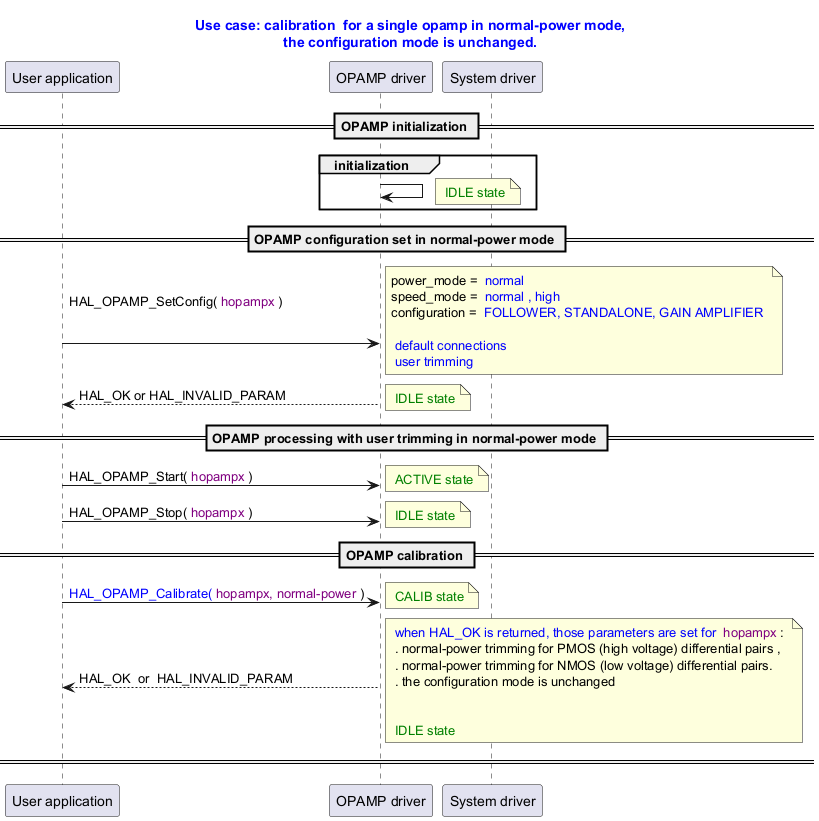
Functions called:
User Application Calibration for a Single OPAMP in Low-Power Mode ¶
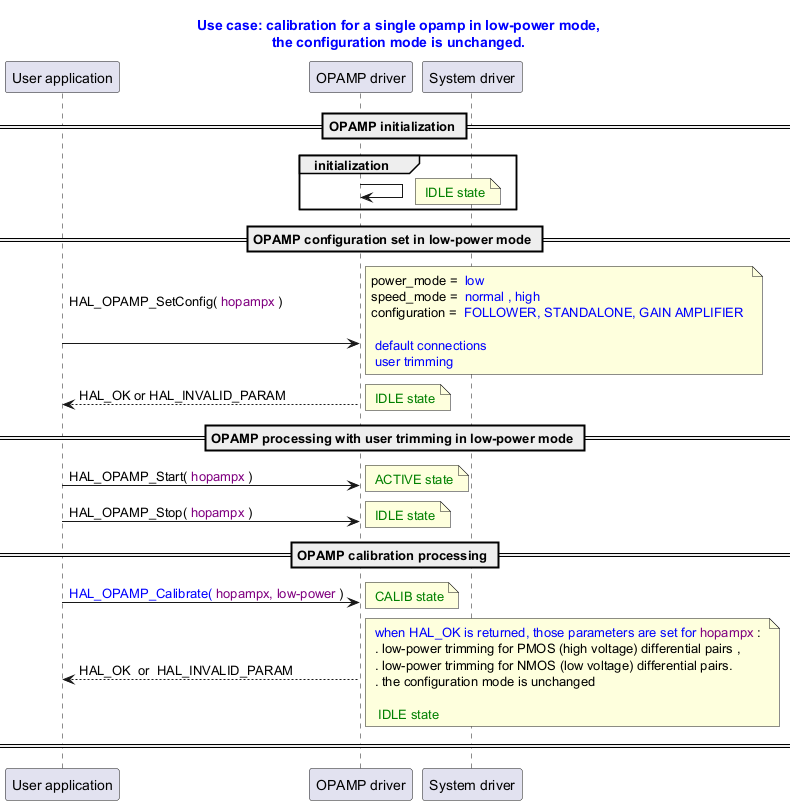
Functions called:
User Application Retrieve Factory Offset Trimming in Normal-Power Mode ¶
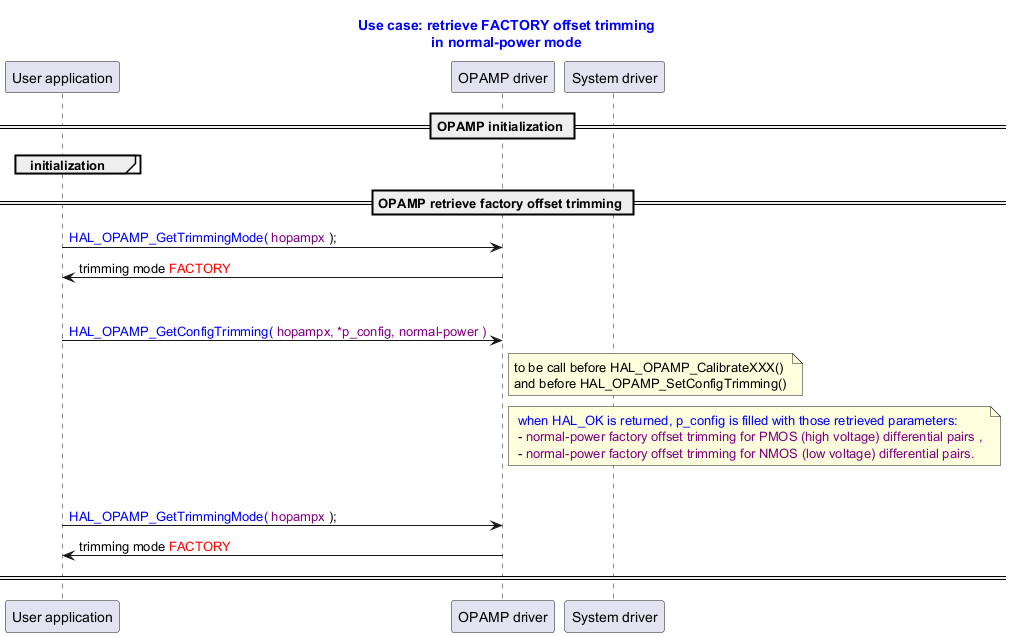
Functions called:
User Application Retrieve Factory Offset Trimming in Low-Power Mode ¶
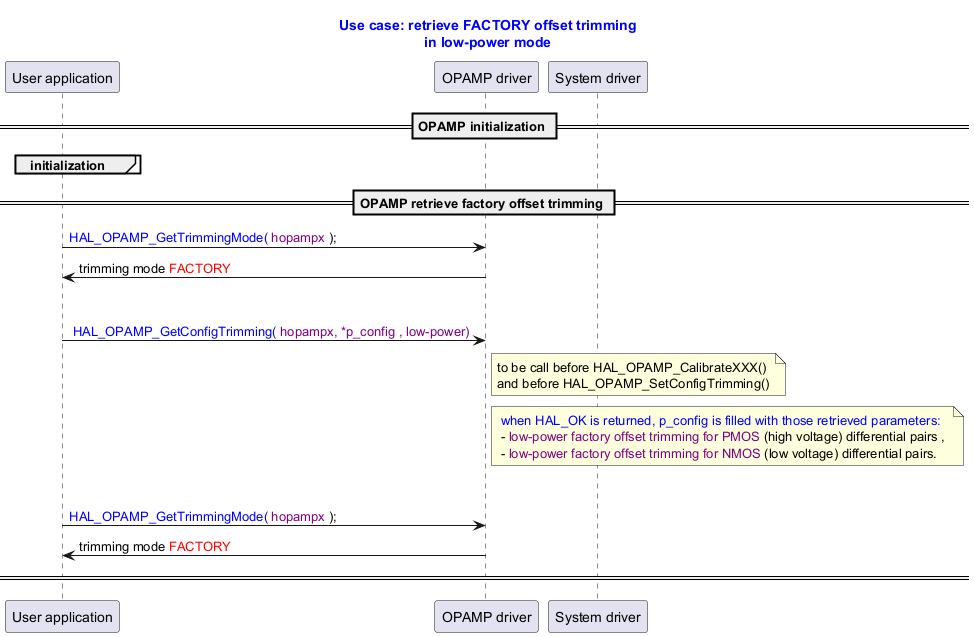
Functions called:
User Application Retrieve User Offset Trimming in Normal-Power Mode ¶
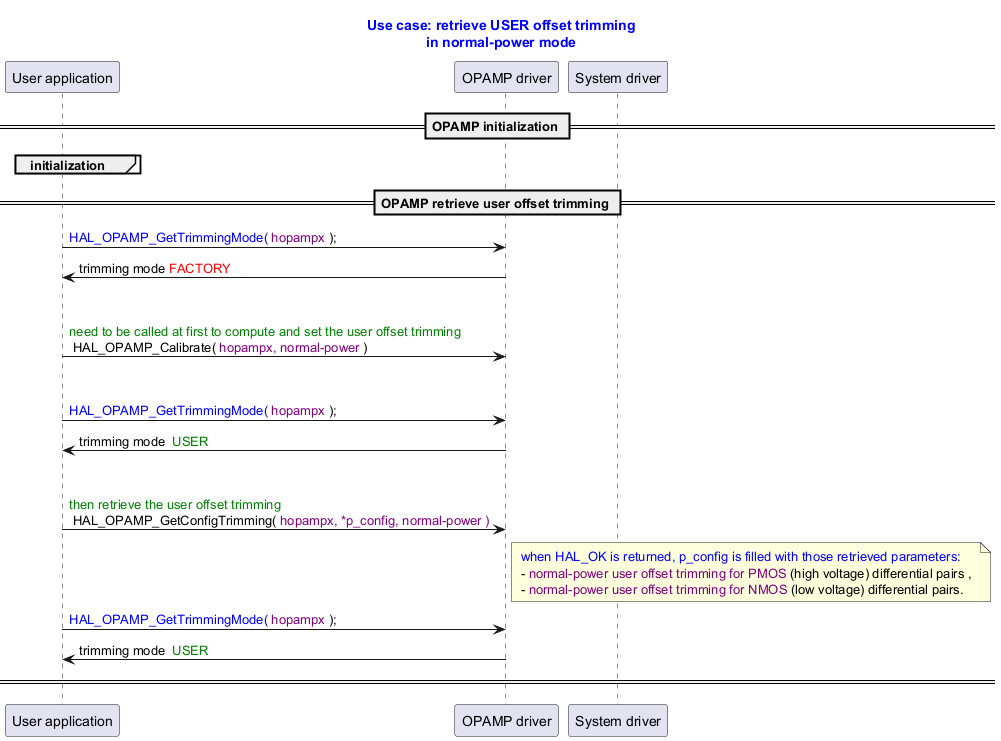
Functions called:
User Application Retrieve User Offset Trimming in Low-Power Mode ¶
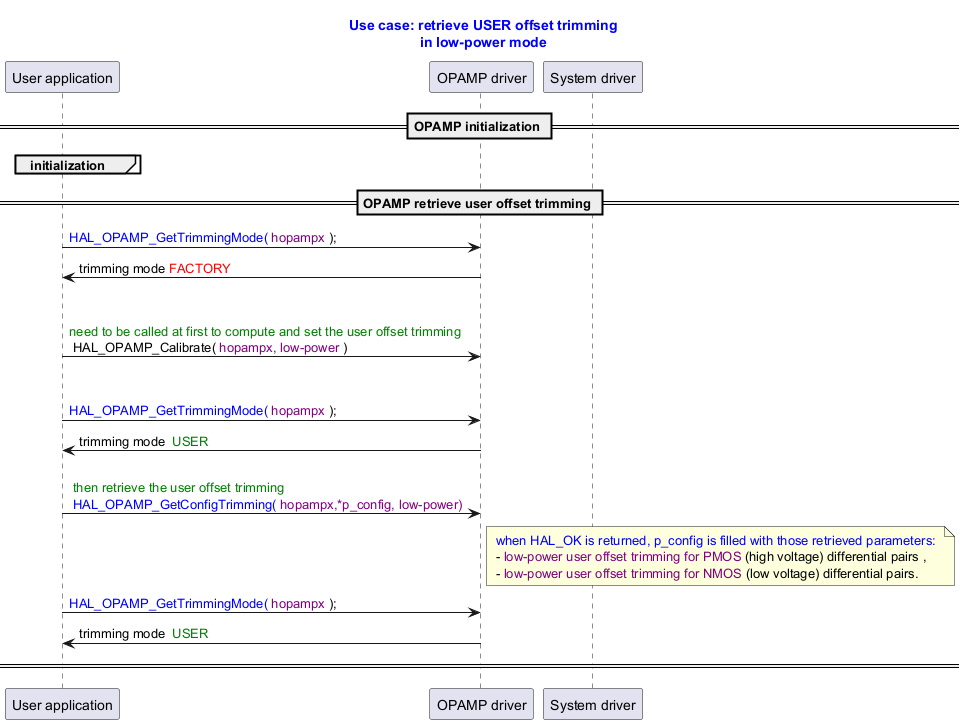
Functions called: